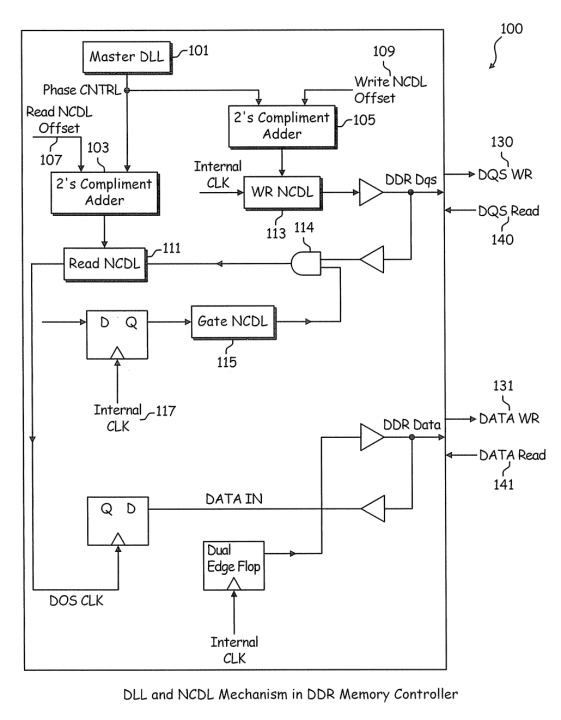Leveraging IP data can strengthen your research strategy while positioning your company to actively identify opportunities and threats. However, the question is what should one be looking at? There are a number of areas to investigate but the first one we’re going to take a look at is emerging or “developing” technologies.
With emerging technologies, we know that there is a path to success coming from an investment in research and development and we also know that these efforts may lead to subsequent discoveries that may forecast an innovation plan. These innovations aren’t always obvious to an established market. They can serve as an ultimate disruption, so it’s best to be aware of these even if you think they don’t impact you.
Blockchain
Blockchain is a great example of an emerging technology because the limits of this technology remain unknown. We’ve seen everything from cryptocurrency applications in finance (BitCoin), to the monitoring of supply chains, to securing healthcare transactions. However, Blockchain goes far beyond the finance and healthcare industries – some examples of entities and how they use Blockchain include:
 |
Bumble Bee, Avoiding foodborne illnesses by tracking tuna fish catches | 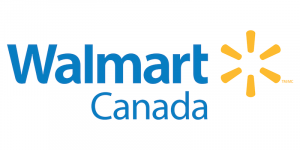 |
Walmart Canada, Managing supply chain and handling Delivery tracking |
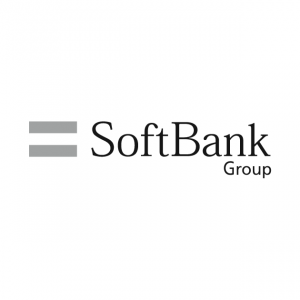 |
Softbank, Improving cross-carrier relations and payments |  |
Samsung SDS, Processing Medical Claims |
 |
Merck, Protecting against cyberattacks | 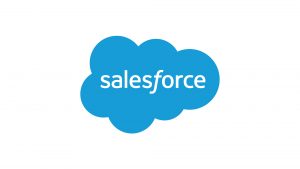 |
Salesforce, Decentralizing dependency on cloud service providers |
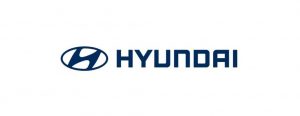 |
Hyundai, Securing confidential vehicle information such as mileage, service history, and age | 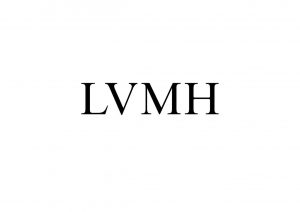 |
LVMH, Securing Proof of Authenticity to reduce counterfeiting |
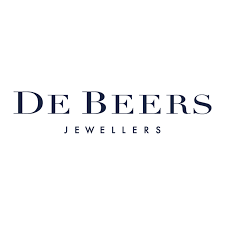 |
De Beers, Certifying legal and ethical diamonds |  |
ComEd, Managing energy distribution grids |
 |
Tata Steel, Ensuring supply chain transparency and developing sustainability solutions | Maersk, Managing supply chains |
Many creative minds out there are suggesting new applications. What does the data tell us? What do we know about the activity associated with this technology?
Top Blockchain Patent Holders
The chart below shows the top ten patent holders retain just shy of 25% of the issued blockchain patents – 2,418 patents. This leaves 2,859 entities to hold the remaining 75% totaling to 6,914 patents. Last year, the top ten blockchain patent holders owned 40%, meaning the market is becoming more diversified.
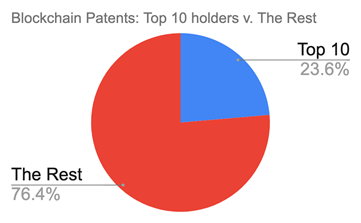
The chart below gives insight into who the top ten blockchain patent holders are. While IBM, Microsoft, and Amazon are established brands, other entities such as Silverbrook Research, an Australian company headed up by prolific inventor Kia Silverbrook, might not be well-known.
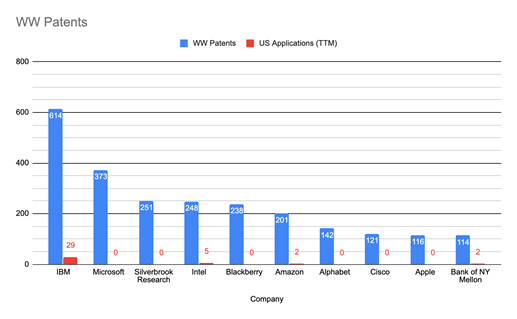
Looking closely at the chart you can see that most of the entities are not only in the hi-tech space but also headquartered in North America. With that being said, taking a look at the trailing twelve months (TTM) US applications (next to the patents in red) it is clear that the entities holding Blockchain patents are not necessarily the ones that are filing new Blockchain patents – the innovation is coming from entities other than the well-known players.
Top Blockchain Applicants
The story is a bit more interesting when we take a closer look at the TTM US patent applications. The chart below shows the top ten entities hold just over 38% of blockchain applications filed – innovation is somewhat more concentrated here.
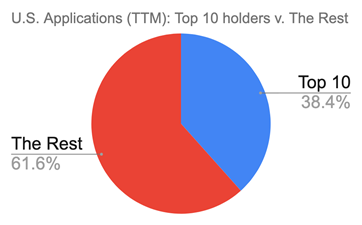 In the chart below, we still see IBM and Intel, but now companies like Alibaba (China), Walmart, Accenture (Ireland), Zhongan Info (China) and Coin Plug (Korea) have made the list. These entities are more geographically diverse in comparison to the top Blockchain patent holders. Where did Google, Amazon, Apple, and Microsoft go? It is interesting how an omission can stand out more. The list is more diverse from a segment perspective – it is not exclusively hi-tech. There are more entities in the financial space – for example, Workday Inc is “an on‑demand, cloud-based financial management, and human capital management software vendor” based out of California. In any event, these charts highlight that those entities leading the pack with patents may not be leading innovation efforts.
In the chart below, we still see IBM and Intel, but now companies like Alibaba (China), Walmart, Accenture (Ireland), Zhongan Info (China) and Coin Plug (Korea) have made the list. These entities are more geographically diverse in comparison to the top Blockchain patent holders. Where did Google, Amazon, Apple, and Microsoft go? It is interesting how an omission can stand out more. The list is more diverse from a segment perspective – it is not exclusively hi-tech. There are more entities in the financial space – for example, Workday Inc is “an on‑demand, cloud-based financial management, and human capital management software vendor” based out of California. In any event, these charts highlight that those entities leading the pack with patents may not be leading innovation efforts.
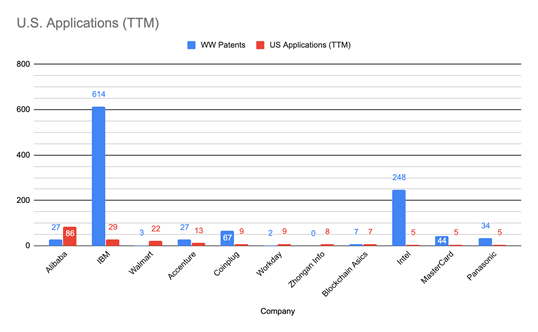
If we recall the above examples of entities using Blockchain they show where innovation in this space is sprouting from now. This provides insights into how businesses and competition in different areas are evolving. Access to these insights allows your company to answer the critical questions – What does it take to become and/or remain competitive? Where is the competition investing its resources? What opportunities are presented with the integration of blockchain technology into strategic planning?
Blockchain-compatible sneakers
Blockchain technology will soon be found in the athletic world. Nike was granted a patent related to cryptographically securing shoes that were granted in December of last year. With that said, it doesn’t matter where you are or how technologically isolated you might feel you are, you need to have eyes on IP.
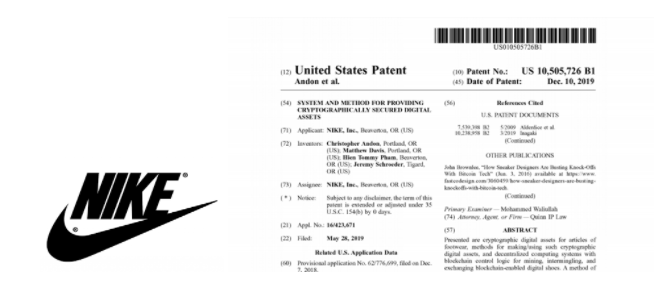
If you are interested in learning more about how leveraging IP data can help you develop a stronger business model and drive your execution methods please do not hesitate to reach out.




